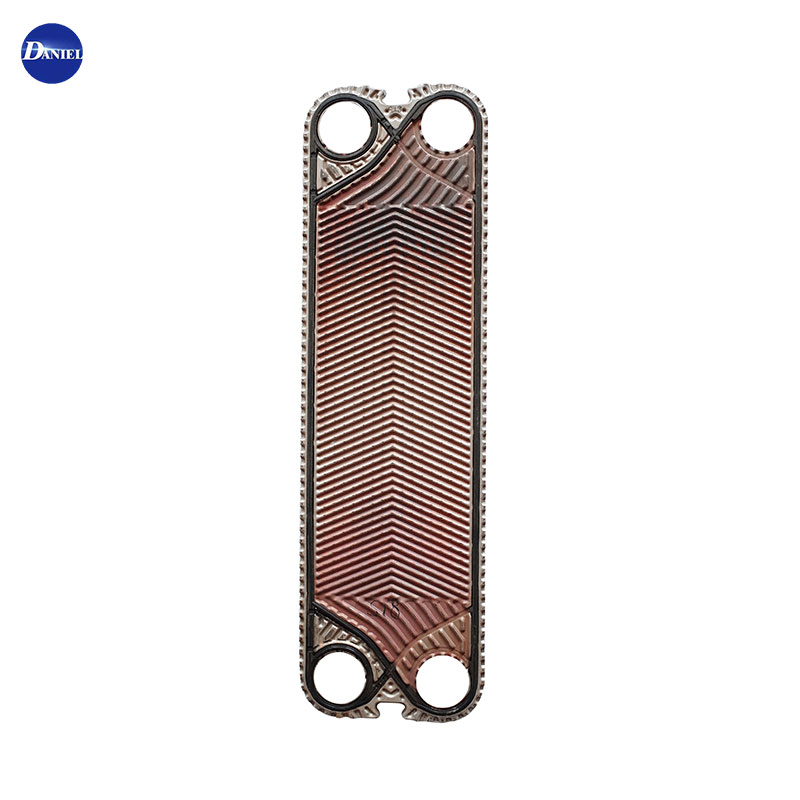
 English
English  Español
Español Português
Português русский
русский Français
Français 日本語
日本語 Deutsch
Deutsch tiếng Việt
tiếng Việt Italiano
Italiano Nederlands
Nederlands ภาษาไทย
ภาษาไทย Polski
Polski 한국어
한국어 Svenska
Svenska magyar
magyar Malay
Malay বাংলা ভাষার
বাংলা ভাষার Dansk
Dansk Suomi
Suomi हिन्दी
हिन्दी Pilipino
Pilipino Türkçe
Türkçe Gaeilge
Gaeilge العربية
العربية Indonesia
Indonesia Norsk
Norsk تمل
تمل český
český ελληνικά
ελληνικά український
український Javanese
Javanese فارسی
فارسی தமிழ்
தமிழ் తెలుగు
తెలుగు नेपाली
नेपाली Burmese
Burmese български
български ລາວ
ລາວ Latine
Latine Қазақша
Қазақша Euskal
Euskal Azərbaycan
Azərbaycan Slovenský jazyk
Slovenský jazyk Македонски
Македонски Lietuvos
Lietuvos Eesti Keel
Eesti Keel Română
Română Slovenski
Slovenski मराठी
मराठी Srpski језик
Srpski језик
Here are some key points about plate heat exchanger gaskets.
2023-06-13
A plate heat exchanger gasket is a component used in plate heat exchangers to provide a tight and leak-free seal between the plates. Plate heat exchangers consist of a series of plates that are arranged in alternating layers to create flow channels for two fluids. The gaskets are positioned between the plates to ensure that the fluids remain separate and do not mix.
Material: Plate heat exchanger gaskets are typically made of elastomers such as Nitrile (NBR), EPDM (Ethylene Propylene Diene Monomer), or Viton (fluoroelastomer). The choice of gasket material depends on the operating conditions, including temperature, pressure, and the fluids being processed.
Sealing Function: The primary function of the gasket is to create a reliable seal between the plates, preventing any cross-contamination or leakage between the fluid channels. The gasket design and material are carefully selected to withstand the operating conditions and provide long-term sealing performance.
Gasket Types: There are different types of plate heat exchanger gaskets available to suit specific applications. Some common types include clip-on gaskets, glued gaskets, and snap-in gaskets. The selection of the gasket type depends on factors such as ease of installation, maintenance requirements, and the heat exchanger design.
Maintenance and Replacement: Plate heat exchanger gaskets may experience wear and tear over time, leading to potential leakage or reduced performance. Regular inspection and maintenance are essential to ensure the gaskets are in good condition. If a gasket becomes damaged or worn out, it needs to be replaced promptly to maintain the efficiency and integrity of the heat exchanger.
Compatibility: When replacing a gasket, it is crucial to ensure compatibility with the specific heat exchanger model and gasket material requirements. Different manufacturers may have proprietary gasket designs, so obtaining gaskets from the original equipment manufacturer (OEM) or authorized suppliers is recommended to ensure proper fit and performance.
Installation: Proper installation of the gaskets is critical for achieving a reliable seal. Following the manufacturer's guidelines and recommendations for gasket installation procedures, torque values, and tightening sequences is important to avoid potential issues and ensure an effective seal.
It's important to note that plate heat exchanger gaskets are specific to each heat exchanger model and manufacturer. Therefore, consulting us or a knowledgeable expert is advisable when selecting or replacing gaskets to ensure compatibility and optimal performance.






